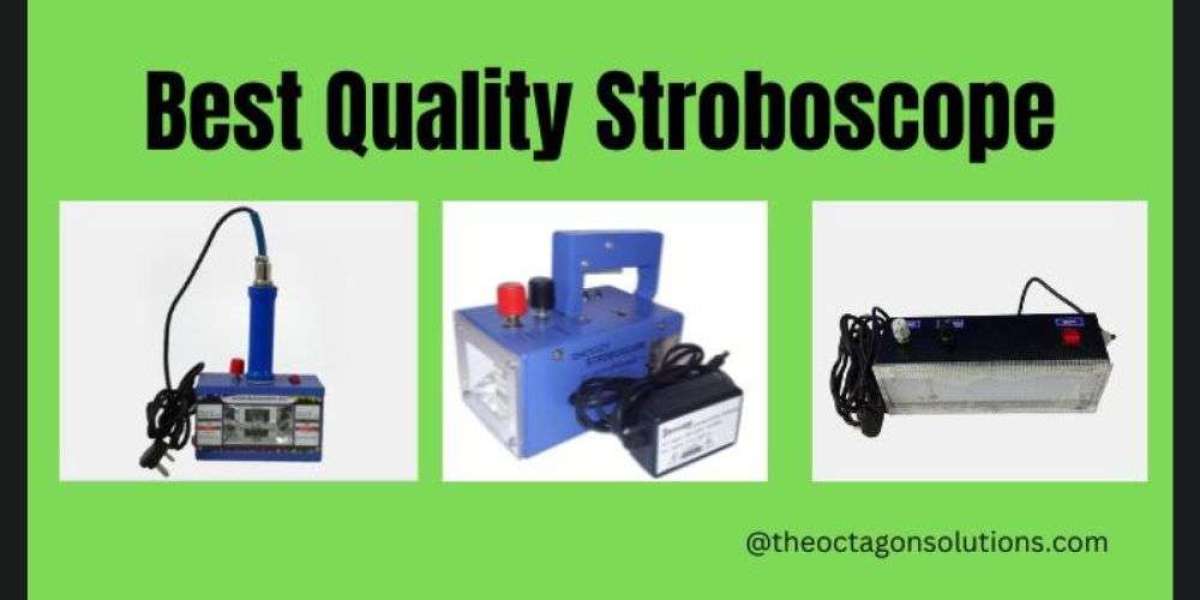In the realm of high-speed motion, understanding and analyzing the behavior of rapidly moving objects can be challenging for the human eye. Fortunately, stroboscopes, fascinating optical instruments, offer a solution. These devices emit short bursts of intense light at specific frequencies, synchronized with the periodic motion of objects, creating the illusion of slowing down or freezing motion. Stroboscopes find applications in diverse industries, from machinery maintenance and quality control to scientific research and entertainment. In this article, we delve into the working principles, types, applications, and significance of stroboscopes in various fields.
The Working Principle of Stroboscopes
The fundamental principle behind stroboscopes lies in the persistence of vision. When our eyes observe a series of quick flashes, they retain the image for a brief moment after the light disappears. Stroboscopes exploit this phenomenon to create the illusion of slowing down or freezing fast-moving objects.
The working principle of stroboscopes can be summarized as follows:
Flash Frequency Control: Stroboscopes allow users to adjust the frequency of light flashes, typically measured in Hertz (Hz) or flashes per minute (FPM). This control is essential because the flash frequency needs to match or be a multiple of the object's motion frequency to achieve the stroboscopic effect.
Flash Synchronization: For effective observation of fast-moving objects, the stroboscope's flashes must be synchronized with the object's periodic motion. This can be achieved through manual adjustment or by using sensors that detect the object's motion and trigger the stroboscope's flashes accordingly.
Persistence of Vision: The stroboscopic effect relies on the persistence of vision phenomenon. By emitting short bursts of light at a specific frequency, the stroboscope creates the illusion of slowing down or freezing the motion of the object. This allows for detailed observation and analysis.
Types of Stroboscopes
Stroboscopes come in various types, each designed to cater to specific applications and industries. Some common types include:
Fixed Stroboscopes: Designed for permanent installation in specific workstations or machinery, fixed stroboscopes are used for continuous monitoring and inspection tasks in industrial settings.
Portable Stroboscopes: These handheld devices are ideal for on-site inspections and troubleshooting tasks. They offer mobility and convenience for professionals who need to analyze motion in different locations.
Tube Stroboscopes (U-Tube Stroboscopes): Utilizing U-shaped flash tubes, these stroboscopes are valuable for inspecting rotating components and alignment tasks in manufacturing and maintenance industries.
Handheld Stroboscopes (LED Hand Model Stroboscope): Compact and easy to operate manually, handheld stroboscopes offer versatility for visual inspections, motion analysis, and research purposes.
Digital Stroboscopes: Incorporating microprocessors and digital displays, digital stroboscopes provide advanced features and precise control over flash frequency and other parameters.
Video Stroboscopes: Combining stroboscopic effects with video technology, video stroboscopes allow for continuous observation and recording of high-speed motion.
Applications of Stroboscopes
Stroboscopes find extensive applications in various industries and scientific fields:
Machinery Maintenance and Troubleshooting: Stroboscopes are used to inspect rotating parts and moving components for defects, misalignments, and mechanical issues in industrial machinery.
Quality Control and Synchronization: In manufacturing, stroboscopes ensure proper timing and coordination of components on assembly lines and printing presses, ensuring consistent product quality.
Scientific Research: Stroboscopes are valuable tools in scientific research, allowing for the study of rapid phenomena such as vibrations, oscillations, and fluid dynamics.
Entertainment and Art: The stroboscopic effect is utilized in entertainment for lighting effects in stage performances and visual arts.
Read more:- Fixed Stroboscope || Industrial Stroboscope || Stroboscope || Portable Stroboscope || Digital Stroboscope || Tube Stroboscope || Hand Model Stroboscope || LED stroboscope || Handy Stroboscope || stroboscope light
Conclusion
Stroboscopes play a vital role in illuminating the world of high-speed motion. By exploiting the persistence of vision, these optical instruments enable us to visualize and analyze fast-moving objects with precision. From fixed stroboscopes for continuous monitoring to portable stroboscopes for on-site inspections and handheld models for versatile applications, each type of stroboscope offers unique features and benefits. As technological advancements continue, stroboscopes will undoubtedly remain essential tools in various industries, contributing to machinery maintenance, quality control, scientific research, and entertainment, and expanding our understanding of the dynamic world around us.









